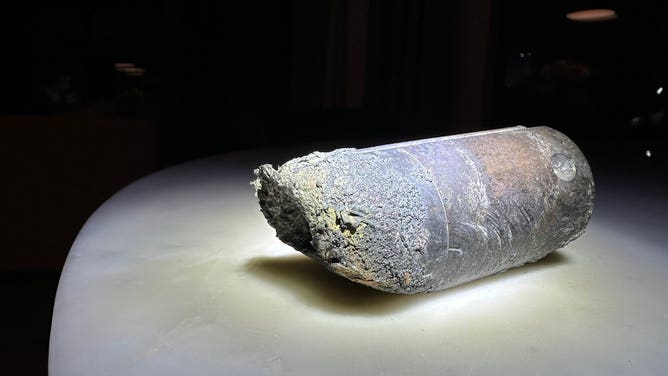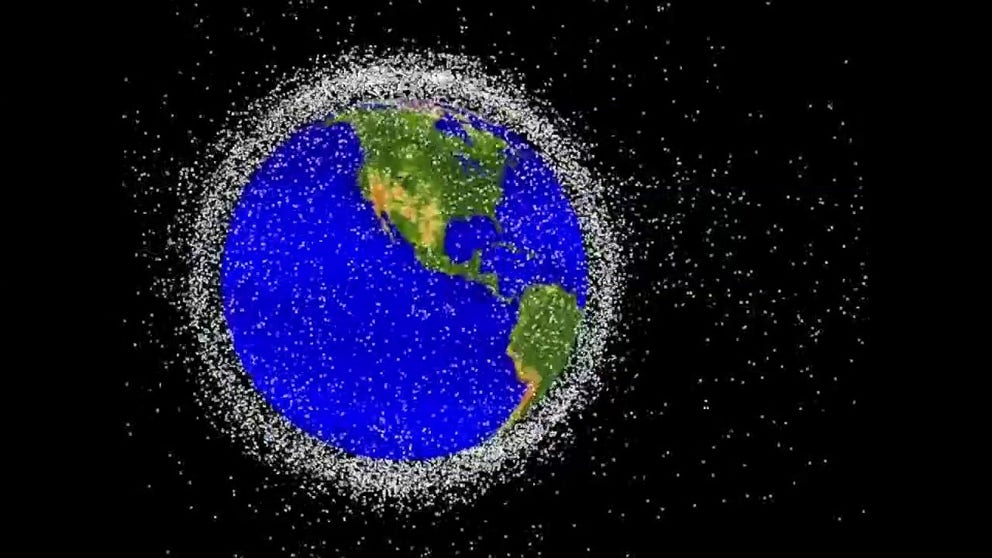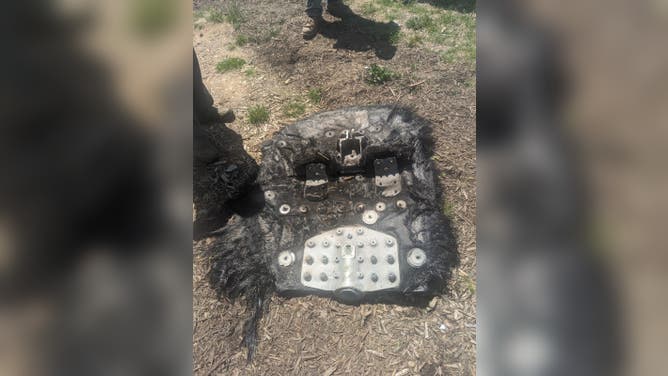NASA, SpaceX working to mitigate hazards posed by space debris
In 1972, the United Nations established an agreement stating that countries responsible for a space launch would be held liable for any damages caused. The Glamping Collective, a company that owns and operates cabins on a private mountaintop about 20 minutes west of Asheville, found a piece of a SpaceX trunk in late May on its property.
Watch simulation of space debris orbiting the Earth
The following graphics are computer-generated images of objects in low-Earth orbit that are currently being tracked. The orbital debris dots are scaled according to the image size of the graphic to optimize their visibility and are not scaled to Earth. (Courtesy: NASA ODPO)
WASHINGTON – NASA is now acknowledging debris from SpaceX missions may not entirely burn upon entering Earth’s atmosphere, as models previously suggested, increasing the risks for surface impacts.
According to the space agency, it is aware of at least five instances where debris that was designed to disintegrate made it to Earth’s surface.
Fortunately, none of these events resulted in human injuries or significant property damage. However, a slight change in trajectory would have increased risks to property owners and aviation.
The most recent discovery of debris occurred on a private mountaintop outside Asheville, North Carolina, where groundkeepers stumbled upon a section of a trunk from a Dragon spacecraft.
The trunk, which is designed to carry cargo into space, remains attached to the spacecraft until shortly before re-entry, where the sections separate.
PIECE OF SUSPECTED SPACE DEBRIS FOUND IN RURAL NORTH CAROLINA
"During its initial design, the Dragon spacecraft trunk was evaluated for re-entry breakup and was predicted to burn up fully," a NASA spokesperson stated. "The information from the debris recovery provides an opportunity for teams to improve debris modeling. NASA and SpaceX will continue exploring additional solutions as we learn from the discovered debris."
It is unclear what modifications SpaceX could implement on spacecraft to minimize the risk of debris falling through the entire atmosphere.
The space company has not publicly commented following any of the discoveries, despite the pieces of space junk gaining viral attention.
NASA warns there is the potential for more space debris after the SpaceX Crew-8 returns from the International Space Station in August.
If pieces of the crew’s trunk follow a similar timeline as previous debris, the objects will remain in low-Earth orbit until early fall, before possibly descending over a community or into one of the planet’s vast oceans.
SEE THE OBJECTS HUMANS LEFT BEHIND ON THE MOON
How a piece of space debris ended up in North Carolina
The owner of The Glamping Collective, a private mountain resort in North Carolina, says he is planning to put the debris from the SpaceX Crew-7 mission on display for guests to see.
Who is liable for damage from space junk?
So far, debris from SpaceX missions has landed harmlessly in mostly rural areas on the planet.
However, in the rare event that damage or injuries are caused by falling space junk, a 1972 agreement spells out who would be responsible.
According to the United Nations Office for Outer Space Affairs, "A launching State shall be absolutely liable to pay compensation for damage caused by its space object on the surface of the earth or to aircraft in flight."
Despite the U.S. tracking some 45,400 objects in space, the chance of actually being hit by debris is considered to be less than one out of a trillion.
A Florida man recently beat the odds when a piece of discarded hardware from the International Space Crash station crashed through his Naples-area home in March.
Fortunately, no one was injured by the approximately two-pound object, but it did cause damage to the residence.
An attorney representing the family has filed a claim with NASA to recover compensation for the damage.
"Space debris is a real and serious issue because of the increase in space traffic in recent years," Mica Nguyen Worthy, an attorney with Cranfill Sumner LLP, said in a statement.

A piece of suspected space debris came crashing down through a Naples, Florida home on March 8, 2024. (Image credit: Alejandro Otero / LOCAL NEWS X /TMX)
(Alejandro Otero / LOCAL NEWS X /TMX)
NASA advises anyone who comes across a piece of space debris to never handle the object and to contact local authorities.
SpaceX has established a hotline at 1-866-623-0234 for witnesses to contact if debris is uncovered from its missions.




